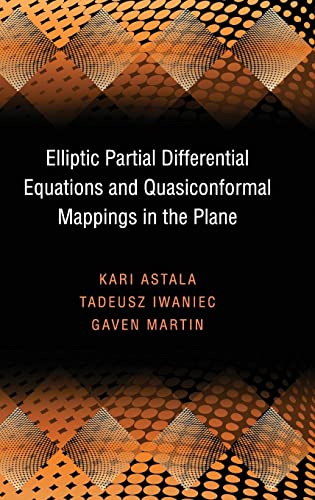Book Details

Elliptic Partial Differential Equations and Quasiconformal Mappings in the Plane
The book explains that the existence, regularity, and singular set structures for second-order divergence-type equations—the most important class of PDEs in applications—are determined by the mathematics underpinning the geometry, structure, and dimension of fractal sets; moduli spaces of Riemann surfaces; and conformal dynamical systems. These topics are inextricably linked by the theory of quasiconformal mappings. Further, the interplay between them allows the authors to extend classical results to more general settings for wider applicability, providing new and often optimal answers to questions of existence, regularity, and geometric properties of solutions to nonlinear systems in both elliptic and degenerate elliptic settings.
Introduction
A Background in Conformal Geometry
The Foundations of Quasiconformal Mappings
Complex Potentials
The Measurable Riemann Mapping Theorem: The Existence Theory of Quasiconformal Mapping
Parameterizing General Linear Elliptic Systems
The Concept of Ellipticity
Solving General Nonlinear First-Order Elliptic Systems
Nonlinear Riemann Mapping Theorems
Conformal Deformations and Beltrami Systems
Quasilinear Cauchy Problem
Holomorphic Motions
Higher Intergrability
Theory of Beltrami Operators
Schauder Estimates for Beltrami Operators
Applications to Partial Differential Equations
PDEs Not of Divergence Type:Pucci's Conjecture
Quasiconformal Methods in Impedance Tomography: Calderon's Problem
Integral Estimates for the Jacobian
Solving the Beltrami Equation: Degenerate Elliptic Case
Aspects of the Calculus of Variations
Appendix: Elements of Sobolev Theory and Function Spaces
Basic Notation
Bibliography
Index

Meaning, Creativity, and the Partial Inscrutability of the Human Mind

TALK IS CHEAP : THE PROMISE OF REGULATORY REFORM IN NORTH AMERICAN TELECOMMUNICATIONS
Popular Picks on the Month















